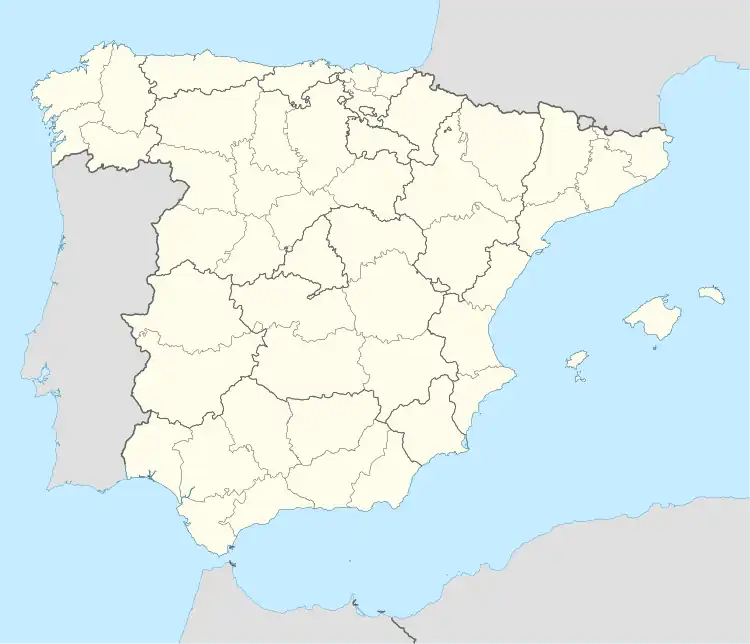Silla | |
|---|---|
 | |
 Flag  Coat of arms | |
 Silla Location in Spain | |
| Coordinates: 39°21′40″N 0°24′41″W / 39.36111°N 0.41139°W | |
| Country | |
| Autonomous community | |
| Province | Valencia |
| Comarca | Horta Sud |
| Judicial district | Carlet |
| Government | |
| • Alcalde | Vicent Zaragozá Alberola (PSPV-PSOE) |
| Area | |
| • Total | 25 km2 (10 sq mi) |
| Elevation | 8 m (26 ft) |
| Population (2018)[1] | |
| • Total | 18,467 |
| • Density | 740/km2 (1,900/sq mi) |
| Demonym(s) | Siller, Sillera |
| Time zone | UTC+1 (CET) |
| • Summer (DST) | UTC+2 (CEST) |
| Postal code | 46460 |
| Official language(s) | Valencian and Spanish |
| Website | Official website |
Silla (Valencian: ['siʎa]) is a municipality in the comarca of Horta Sud in the Valencian Community, Spain. According to the 2014 census,[2] The municipality has a population of 18,644 inhabitants.
The town has six casales falleros, for the different Fallas. Silla has different cultural associations. Because of the great immigration of Andalusian people in the 1960s, Silla has got a Casa de Andalucia.
In Silla there is a very important local theater school. Founded in 1985, it is one of the first drama schools in the area.
Etymology

The etymology of Silla is not known for certain. Some say that it comes from the Arabic Sila,[3] others say from Latin, and still others from Valencian meaning "the island". Among these three theories, the most commonly accepted one is that it comes from Latin, as it has been proved that there was a Roman cellar where the town is situated now.
Notable people
- Juan María de la Cruz (1891-1936), priest, was executed here during the Spanish Civil War
- Javi Moreno (1974-), former footballer
References
- ↑ Municipal Register of Spain 2018. National Statistics Institute.
- ↑ Instituto Nacional de Estadística (INE)
- ↑ Miguel Asín Palacios (1940). Contribución a la toponimia árabe de España. Madrid: Consejo Superior de Investigaciones Científicas. p. 134.
External links
 Media related to Silla at Wikimedia Commons
Media related to Silla at Wikimedia Commons
